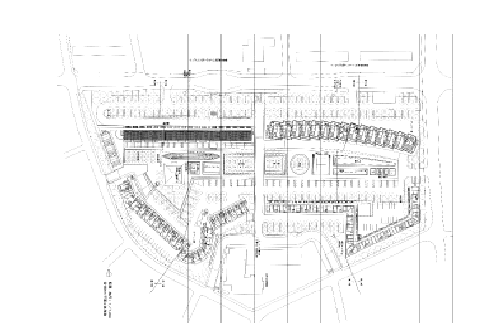Gifu
Kitagata Apartment Building Takahashi Wing
Kitagata, Motosu-gun,
Gifu Prefecture, Japan
| Notable Features | |
| Modular standardization | |
| Half-void slab system | |
| Half-circles ceiling system | |
| Use of wavy glass panels | |
| Use of moveable partitions and furniture | |
| Unique rhythmic pattern | |
| C&D waste minimization | |
| Basic Information | |
| Location: Gifu, Japan | |
| Structure : Reinforced Concrete | |
| Building Type: 10-Storey Public Housing Reconstruction | |
| Completion: March 1998 (1994-1998) | |
| Building Area: 639 m2 | |
| Total Floor Area: 4,843 m2 | |
| Architect: Akiko + Hirosi Takahashi / Workstation and Tsukasa Sekkei | |
| Overview | ||||||||||||||
|
The apartment building is part of a large scale public housing reconstruction project located about 15 minutes from Gifu City by car. Four women architects were selected under the coordination of Japanese architect Arata Isozaki to execute the projects. This linear Wing designed by architect Akiko and Hirosi Takahashi sits on the north-west part of the site where the idea for the overall layout of the development was to run the buildings around the perimeter. | ||||||||||||||
|
Site Layout Plan | ||||||||||||||
|
| Modular Standardization |
|
The room
type unit plans can be considered as a means of
standardization, in which all spaces are based on co-ordinated
dimensions. Although such a co-ordinated dimensioning is
applied in a mid-rise linear apartment block, which imposes a
different constraints and opportunities as oppose to Hong Kong
residential towers, it shall be considered as a basic
principles in building design. |
| Slab System |
|
The half-void slab system employed generates a pattern of continuous series of half-circles on the ceiling uniquely for the users of the building. Such a uniquely integrated pattern, which can also be seen from outside, creates a visual excitement and adds character for both the inside and outside. Some of the slabs are further extended to form the balconies of certain units in a rhythmical way generating an external pattern uniquely of its own. The pattern is further enriched by the light and shades cast from the structurally integrated balconies. The monolithic image of the building block is dominated by the rhythmic pattern and structural expression, and thus being dissolved. |
|
Extended slabs form balcony, view from inside |
| Conclusion |
|
It is clear from
this building that the employment of coordinated dimensioning does
not trade off the possible rhythmic pattern in modular building
design. In addition, standardized design also does not trade off the
adaptability of a space. Although each unit is standardized based on
a coordinated dimension, the internal usage and character of all
the units are varied. Each unit is being adapted to the style and
preference of the user and such a preference shall or shall not be
pre-determined is still debatable. However, it can be considered as
a means of reducing C & D waste in the long run. |
| Reference |
|
Teramatsu,
Yasuhiro ed. JA Yearbook 1998: Competition Results. Japan: Japan
Architect, 1999. |
| All images are cited from Japan Architect |
